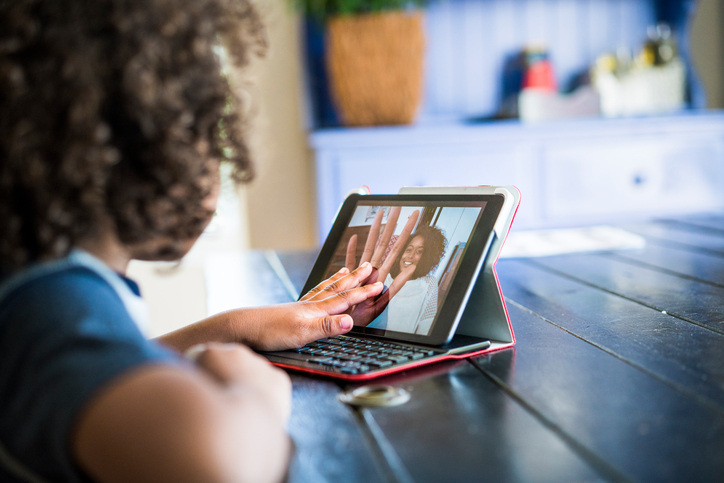Topics

We use media every day. We use it to email coworkers, find recipes for tonight’s dinner and map directions to the nearest grocery store. And children are beginning to use it more than ever. They play videogames, watch videos and use apps. According to Common Sense Media, the average teenager spends at least nine hours using media, while preteens average about six hours of screen time.
With this overwhelming consumption of daily media, it is important parents understand the quality and quantity of media their child intakes. Kids are growing up using technology for so many parts of their lives. They look to their parents to explain the role of technology and how to use it. So, if parents define the constructive, connective and collaborative uses of media, kids will grow up with that knowledge.
Parents, it is important to be proactive about your child’s media usage because too much media can have negative effects. To help monitor media usage, the American Academy of Pediatrics (AAP) recommends parents develop a Family Media Plan that takes into account the health, education and entertainment needs of the child and family. It creates a customized plan for the family and how to use media in the home. With the plan, a family can outline a 24 hour day to know when screen time is beneficial.
It is recommended you begin exposing your child to media no earlier than 18 months. At this age, children have developed the cognitive ability to learn simple things from screens, like new words. Parents, you should watch media with your children to help them understand the content. It is especially important to use high-quality programming, such as PBS or Sesame Street, which include educational content in their programs. Though this is the recommended age, there is no harm in withholding technology from your child when they are young.
Here are AAP recommendations for your child’s screen time depending on their age:
- Younger than 18 months: Avoid use of screen media other than video-chatting. Parents who want to introduce digital media should choose high-quality programming, and watch it with your children to help them understand what they're seeing.
- Ages 2 to 5 years: Limit screen use to 1 hour per day of high-quality programs. Parents should co-view media with children to help them understand what they are seeing and apply it to the world around them.
- Ages 6 and older: Place consistent limits on the time spent using media, and the types of media, and make sure media does not take the place of adequate sleep, physical activity and other behaviors essential to health.
Media can have a powerfully positive impact by initiating learning and building relationships. For instance, after watching something with your child, use that common ground to foster dialogue and ask them questions. Technology can also be used to strengthen relationships, such as video-chatting grandparents your child might rarely see. Developmentally appropriate media can help children connect and create in the world around them.
But be aware of the risks of media as well. If used poorly or obsessively, media can be addicting and distracting. Too much media is related to adverse behavioral, development, sleep and obesity outcomes. Media should not interfere with exercise, sleep, healthy eating, or face-to-face time, but bring the family closer together. It is important for parents to prioritize creative, unplugged playtime, where your child’s brain is not confined to the limitations of an app.
Media is woven into the fabric of daily lives. This is our inescapable reality. As a parent, it is your role to help your children and teens navigate the media environment. By setting expectations and boundaries, you can guide your child’s understanding of the benefits and risks of media.